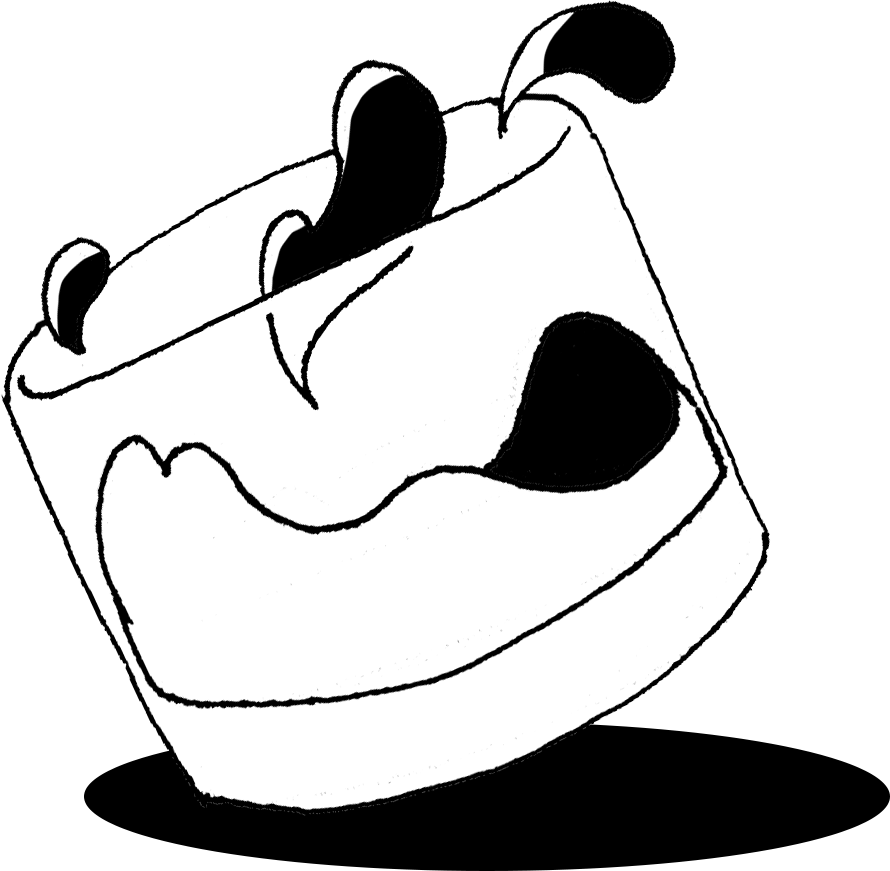The Process

FANTASTIC FORMULAS AND POTIONS
The most phenolic malt in the business, soft pure water from our own water source plus dedication and passion. Making Ardbeg requires a special kind of chemistry – some would say it's a combination of the process itself and the people who make it. And we'd agree.
01
Malting
The most peated of all the Islay malts
Ardbeg uses the most phenolic malt in the business (i.e. the smokiest). The malt is peated to a level of 50ppm. There have been no floor maltings at Ardbeg since 1981 so all the malt that is used in production hails from the maltings in the village of Port Ellen.
At the Distillery it is crushed into a substance called grist by our iconic and extremely rare Boby malt mill, installed in 1921.
The water we use to produce Ardbeg comes from Loch Uigeadail, 3 miles up the hill behind the Distillery. The water flows down the hill and runs into Loch Airigh Nam Beist – from there the burn takes it to Charlie’s Dam at the Distillery and from there it is piped into the Mash House.
02
Mashing
Crush and mash and cattle feed
The ground up malt is then added into a vessel called a mash tun, along with the water from Loch Uigeadail heated to a temperature of 63.5°C. The main purpose of the mash tun is to maximise sugar extraction, therefore water is added three times at 3 different temperatures.
Once the third water has been drained off the spent grains or draff are removed to the farmer’s lorry and is taken it to feed the local cattle. (Lucky cows.)
03
Wort & Fermentation
The Liquid Wort from the Mash tun is cooled to 18°C and pumped into the Wash Backs.
Yeast is added at this stage to begin Fermentation.
The wash backs at Ardbeg are made of Oregon pine. The wood helps to impart an estery, carbolic flavour to the fermenting wash. Fermentation time at Ardbeg is longer than other distilleries because of the high phenolic content of the original malt.
When the Fermentation is complete the fermented wash has an alcohol content of around 8.5% alcohol
04
Distillation
After fermentation comes distillation. We distil twice in order to reach the required strength and desired pure spirit. The first distillation happens in the wash still. It is filled with fermented wash, boiled until the alcohol vapours start rising up the neck of the wash still, pass through the Lyne Arm and finally reach the Condenser, where they are condensed back into liquid form.
The liquid spirit then flows through the spirit safe and travels into the low wines and feints receiver. Any spirit still being produced through the wash still is called low wines. At this stage the alcohol content of the spirit is about 24% alcohol.
HERE COMES THE SCIENCE BIT
The next distillation is done in the spirit still. The same boiling and condensing process applies but the major difference is that the strength of the spirit has increased to 76% alcohol and the quality of the spirit has improved dramatically. However, because there is still an element of impurity in the spirit, we run the initial 10 minutes of spirit back to where it came from (the low wines and feints receiver).
This 10 minutes of spirit is called foreshots. After 10 minutes the spirit is of the highest quality. The spirit is then diverted into a vessel called an intermediate spirit receiver. This is the start of the Spirit Cut i.e. the spirit which will eventually be filled into casks. We run on spirit for around 4.5 hours until the strength is about 62.5% alcohol. At this strength the alcohol is beginning to show off notes i.e. impurities so we divert it back to the low wines and feints receiver for further distillation. So try and picture low wines going into the receiver from the wash still at the same time feints are entering the receiver from the spirit still.
SWEETNESS, FRUITINESS AND FRAGRANCE
During distillation the alcohol vapours evaporate quicker than water so the whole theory of distillation is to try and leave as much water behind as we possibly can, thereby increasing the strength of the spirit. As low wines and feints are nearing the end of their runs i.e. down to 1% alcohol, we stop boiling because we are basically boiling water (the other 99%).
On the Lyne arm of the spirit still at Ardbeg there is a piece of apparatus called a purifier. As the boiling continues in the spirit still, the heavier impure alcohols reach the top of the still (the initial light alcohols are sweet and fruity). Some of the heavier compounds are captured in the purifier and fed back down into the main pot of the still. As the boiling process continues, the heavier phenolics come through, this occurs from about halfway through the spirit run. The purifier gives a little extra reflux, so we have two distillations and a little bit more.
The lighter alcohols are collected during the first two hours of the spirit run. Some heavier alcohols include the phenolics, and those are collected during the second half of the spirit run. This is what gives Ardbeg its great balance and complexity because the heavy peat notes never at any time dominate, although we are using very heavily peated malt. The purifier is unique on Islay and balance is the key.
05
Maturation
The casks we use at Ardbeg come from various sources. The vast amount of whisky matures in ex-Bourbon oak. However, there is always scope in the future to experiment with different type of oak casks.
In maturation only 1st and 2nd fill casks are used. All our new 1st fill Bourbon casks come from suppliers in the US. Our chief nose Dr. Bill Lumsden selects them. Other casks come from Speyside Cooperage, and Craigellachie.
Primarily barrels have been used in the past, but now there is a substantial mix between barrels (for Ardbeg Ten Years Old,) and Sherry Butts (some of which are used for Ardbeg Uigeadail). We also use some new French Oak Barrels for Ardbeg Corryvreckan. And these are our three core expressions.
Because Ardbeg sits very close to the sea, the whisky receives a certain salty, iodine character while it matures.

